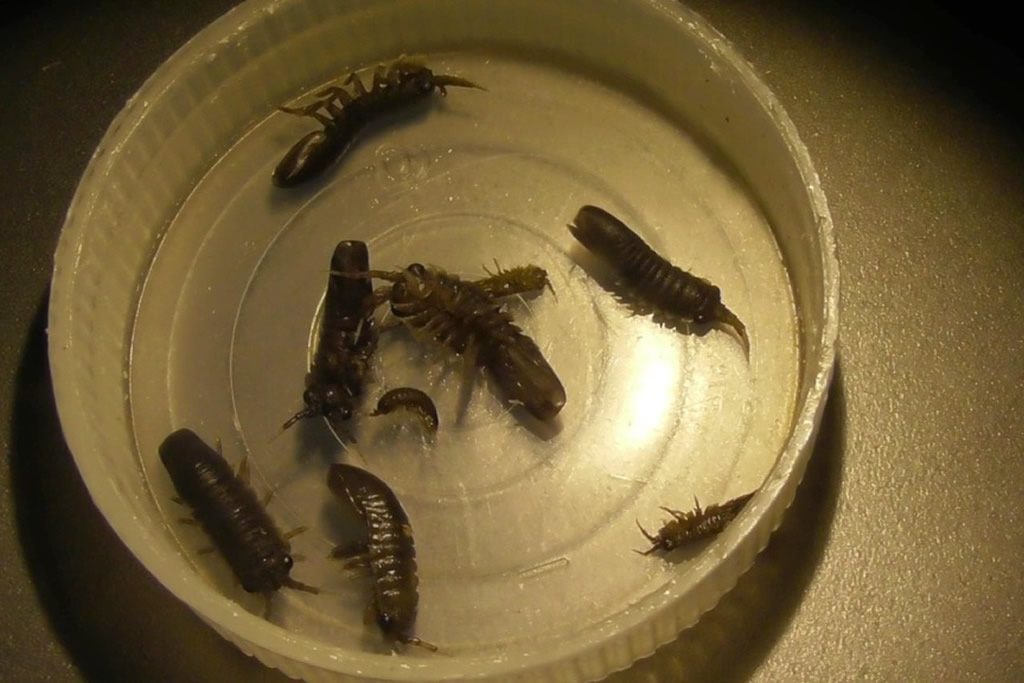Idotea metallica Bosc, 1802
Status:
Casual
ID Difficulty
Identification
Idotea are relatively large, conspicuous and common marine isopods with oval or oblong bodies. Although they often have striking colours and patterns, these are not particularly useful for distinguishing between the various species. Rather, identification should be based on characteristics of the antennae, the coxal plates and the pleotelson.
Males of I. metallica grow up to 30 mm in length, whilst females reach 18 mm. The species is an oblong shape, with a squarish pleotelson. The eyes are large, there is a transverse furrow on the head, the antennae are short, and the antennules just extend beyond their third segment. The coxal plates are distinctive, being triangular in shape and extending from the front to the back of pereonites 2 or 3 to 7. The body colour is grey or brownish.
Distribution and Habitat
This north-west Atlantic pelagic species is not infrequently recorded on western British and Irish shores in material carried across the ocean, such as Goose Barnacles, driftwood and bait boxes. Such items should be examined closely and washed to reveal any hidden passengers, and sealed bait pots (e.g. Scotty pots) should be opened to inspect their contents, as I. metallica is regularly found inside them (see images under Status & Identification tab).
References
Naylor, E. & A. Brandt. 2015. Intertidal Marine Isopods. Synopses of the British Fauna (New Series), No. 3. Field Studies Council, for The Linnean Society of London.




